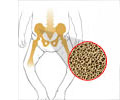Overweight toddlers and those not enrolled in day care are at high risk for iron deficiency confirms a study by UT Southwestern Medical Center researchers.
The study, appearing in the September issue of the journal Pediatrics, is the first to report an association between iron deficiency and being overweight among children as young as 1 to 3 years old.
The study also found that 10 percent of the study’s toddlers not in day care had iron deficiency, while only about 5 percent of toddlers who were enrolled in day care had iron deficiency.“Given the detrimental long-term effects and high prevalence of iron deficiency, preventing iron deficiency in early childhood is an important public health issue,” said Dr. Jane Brotanek, assistant professor of pediatrics at UT Southwestern and lead author of the study.
Iron deficiency, a common cause of anemia, results in impaired bone marrow and muscle function. Iron-deficiency anemia in infancy and early childhood is associated with behavioral and cognitive delays, including impaired learning, decreased school achievement, and lower scores on tests of mental and motor development.
Several studies have demonstrated a high prevalence of iron deficiency in the United States among low-income infants and children, who may experience food insecurity and have diets low in iron.
In the current study, Dr. Brotanek and her colleagues used data from the National Health and Nutrition Examination Survey IV, for a nationally representative sample of U.S. children 1 to 3 years old. The NHANES IV was conducted by the National Center for Health Statistics from 1999 through 2002. Participating families were asked to complete an extensive household interview and have a medical examination in a mobile health center.
Among the 1,641 toddlers tested, 42 percent were Hispanic, 28 percent were white and 25 percent were black. Iron deficiency prevalence was 12 percent among Hispanics versus 6 percent of whites and 6 percent of blacks. Fourteen percent of toddlers with parents interviewed in a language other than English had iron deficiency versus 7 percent of toddlers with parents interviewed in English.
Advertisement
Dr. Brotanek said that children not weaned from the bottle at an appropriate age may become accustomed to drinking excessive amounts of milk and juices, leading to less appetite for a more balanced and healthy diet.
Advertisement
“It may be that children enrolled in day care centers have better diets, with higher amounts of iron, than children who do not attend day care,” Dr. Brotanek said. “Little is known about the quantity and types of foods and beverages served in child care settings as well as staff training on nutrition.”
Hispanic toddlers were significantly more likely than white and black toddlers to be overweight and not in day care. The higher prevalence of these nonethnic risk factors may account for the increased risk of iron deficiency among Hispanic toddlers. Dr. Brotanek said community-based interventions should consider this racial/ethnic disparity and the increased risk of iron deficiency among overweight toddlers when implementing prevention programs.
Other researchers involved in the study were senior author Dr. Glenn Flores, professor of pediatrics at UT Southwestern and director of the division of general pediatrics at Children’s Medical Center Dallas, as well as researchers from the Medical College of Wisconsin and the New York University School of Medicine.
Source-Eurekalert
SPH/C











